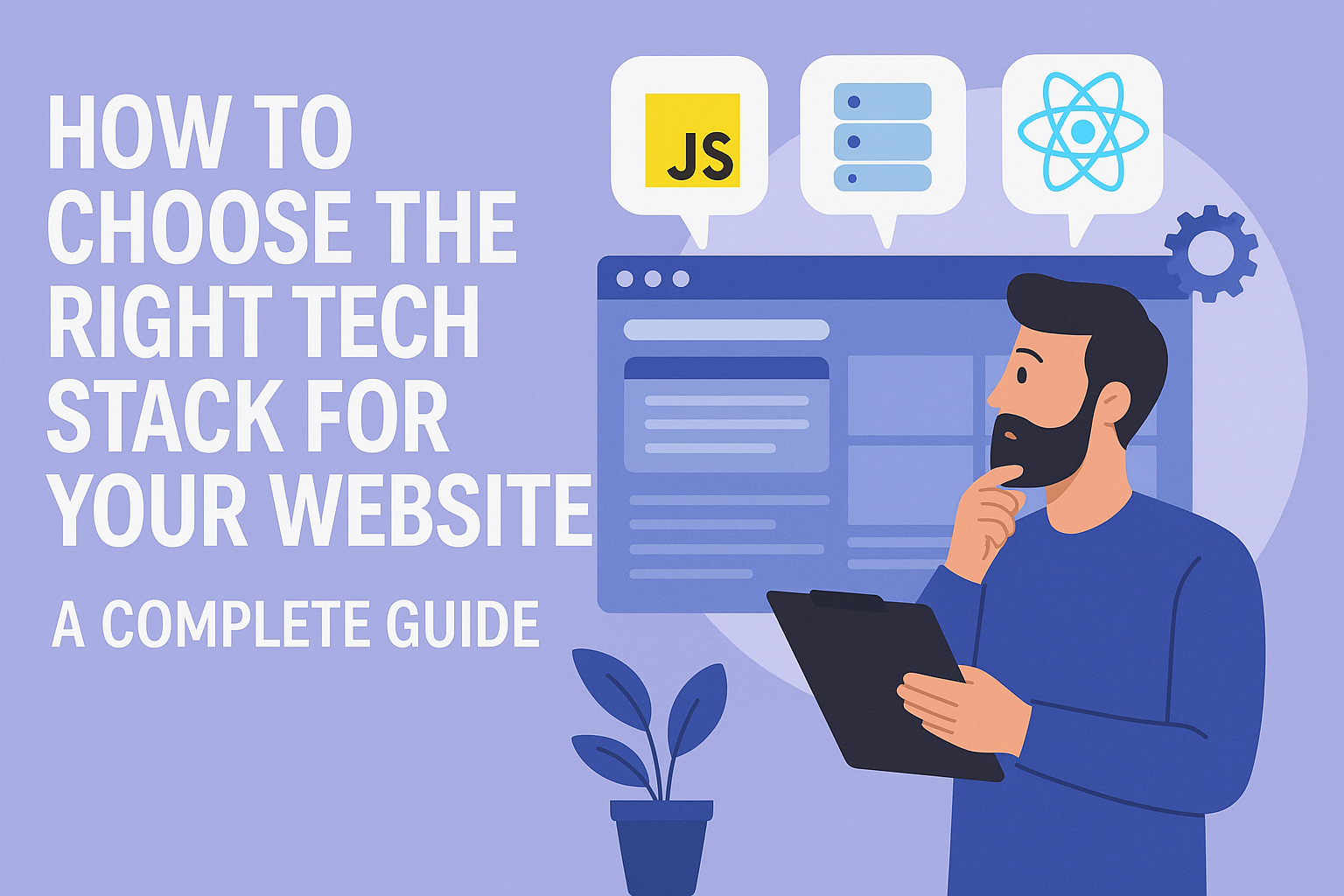Whether you're starting a fresh new website or revamping an existing website, choosing the proper tech stack is one of the most crucial decisions you'll ever make. This will have a direct effect on the performance, scalability, and maintenance of your project. In this blog, we're going to deconstruct everything you need to know about finding the best tools and technologies for your website — including what you need to know about top stacks like PHP, Laravel, and Node.js.
What is a Tech Stack?
A tech stack (or technology stack) is the set of programming languages, frameworks, libraries, tools, and databases that combine to create and execute your website or web application. It typically includes:
• Frontend technologies (what users see)
• Backend technologies (what executes on the server)
• Database (where your data resides)
• DevOps & infrastructure tools (deployment, CI/CD, etc.)
Why the Right Tech Stack Matters
It's not all about selecting the latest tools. The right stack matters because it affects:
• Development speed
• Site performance
• Security
• Project cost
• Scalability and future growth
Step-by-Step: How to Select the Proper Tech Stack for Your Website
Determine Your Website's Purpose
Begin by asking yourself:
Is it a static website, blog, or portfolio?
A dynamic website such as an e-commerce site or booking system?
A real-time application (e.g., chat app, live dashboard)?
Your website's objectives and complexity will decide which technologies are appropriate.
Know Your Team's Expertise
If you or your engineers already know some technologies (e.g., PHP or Laravel), it's logical to use them unless there is a compelling reason to change.
For instance:
A PHP developer may like Laravel or Symfony.
A team with high usage of JavaScript may use Node.js and Express.
Select a Backend Language: PHP vs Node.js
PHP and Node.js are both popularly used for backend — each with its strengths and weaknesses.
PHP
Mature, stable, battle-tested
Supports platforms such as WordPress, Drupal, Magento
Ideal for traditional content-oriented sites
Top PHP Frameworks:
Laravel: Elegant, modern, suited for MVC web applications
Symfony: Enterprise flexibility
Node.js
Non-blocking, event-driven design
Perfect for real-time applications
Full-stack JavaScript (same language on frontend and backend)
Top Node.js Frameworks:
Express.js: Lightweight and fast
NestJS: Modular and scalable, perfect for enterprise applications
Choose the Right Frontend Stack
If your application is highly interactive, your frontend is important too.
Popular Options:
HTML/CSS + JavaScript (simple stack for static websites)
React.js (ideal for SPAs and dynamic interfaces)
Vue.js (lightweight, easy to learn)
Angular (feature-rich, enterprise-grade)
If you're using Node.js, then React or Vue is fine. If you're using Laravel, Blade templates or Inertia.js can be used along with Vue or React.
Select Your Database
Consider your data requirements:
MySQL: Excellent with PHP & Laravel
PostgreSQL: Advanced SQL capabilities, extremely strong
MongoDB: NoSQL, works well with Node.js
If your application requires complex queries or rigid relationships, use SQL. If more flexible and document-oriented (such as a catalog of products), then MongoDB is a better choice.
Look at Hosting and Deployment Options
Stacks require different stacks:
PHP (Laravel) prefers shared hosting, VPS, or Laravel Forge
Node.js applications might require a VPS or cloud platform (such as Heroku, Vercel, or AWS)
Docker and CI/CD pipelines are great for scaling new web applications.
Consider Community and Ecosystem Support
A great tech stack isn't only about performance — it's also about community and available resources.
For instance:
Laravel has a great community, loads of packages, and nice syntax.
Node.js boasts an enormous NPM ecosystem and is supported by giants such as Google and Netflix.
PHP, although older, runs more than 70% of the web and boasts enormous legacy support.
Future-Proof Your Project
Pick tech that is:
Actively maintained
Scalable
Popular enough to easily find developers
Shun mysterious frameworks unless there is a strong reason.
Example Tech Stacks Based on Use Cases
Blog or Portfolio Website:
Frontend: HTML/CSS, Bootstrap
Backend: PHP + Laravel or WordPress
Database: MySQL
Real-Time Chat or Live Dashboard:
Frontend: React.js
Backend: Node.js + Express.js
Database: MongoDB or Redis
E-Commerce Store:
Frontend: Vue.js or Blade (Laravel)
Backend: Laravel
Database: MySQL or PostgreSQL
SaaS Platform:
Frontend: React.js or Inertia.js
Backend: Laravel or Node.js (NestJS)
Database: PostgreSQL
Conclusion: Opt Smart, Not Trendy
There is no single correct answer. The optimal tech stack for your site will vary depending on your objectives, your team's expertise, and the size of the project.
If you're at ease with PHP, use Laravel — it's speedy, safe, and beautiful. If your application has much real-time work or microservices, Node.js could be your best option. Don't overlook factors such as hosting, community, and your project's potential for future expansion.
Ready to create a future-ready website?
Get in touch with us at webseainfo.com . we transform your ideas into high-performance, SEO-optimized websites that drive conversions.
Keep an eye on our blog for more insights and development tips!

